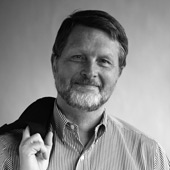Sometime in the early to mid-1990s, I first noticed some enchanting street mosaics on light poles in New York City's East Village. Though the maker was anonymous to me at the time, this was the kind of subversive art I was drawn to. Whenever I went to New York, I was always on the lookout for the street art of another anonymous artist—the “OBEY/Andre the Giant” stencils, which had captured my imagination. These turned out to be the work of the now famous contemporary street artist, activist, designer Shepard Fairey. While I found plenty of the OBEY stencils, which seemed to pop up seemingly anywhere I went, it was the anonymous mosaic artist that I wondered most about. My thoughts wandered to the fact this art took hard work, the kind of art that had to have been created in daylight and in plain view. Made of colorful broken pottery, plates, coins, and baubles of all kind, I wondered who could transform public property like this during Mayor Giuliani’s regime without getting arrested? I contrasted these mosaics to so much of the street graffiti I was seeing, which was often ugly and quickly placed to mark territory. This art was different. Though the maker appeared to have staked out the East Village as his base, the work looked comfortable and a part of the busy neighborhood landscape. For me, the mosaics marked the East Village as progressive, educational, and certainly creative.
In later years, with internet access at my fingertips, I would learn that the mosaics of the East Village Street poles was the work of Jim Power, a Vietnam vet who had been homeless for much of his adult life. Photographs began to appear online, and I recalled the light posts I had seen were covered from the bases up, often extending six feet or more. Almost all contained painstakingly created images and words significant to the area. I read that many of his light posts were indeed removed by Giuliani’s Anti-Graffiti Task Force—until residents in the area protested and actually stopped the art cleansing. Since that dark time, however, other New York mayors have been more accepting, even to the point of honoring Jim Power in a citywide proclamation in 2004 by former Mayor Bloomberg.
Much has been written since about Jim’s work. Making these mosaic light posts has been therapeutic for him, and he has long been accepted as a fixture of the neighborhood. With his trusty dog beside him, Jim is still working today! Should you decide to take a walk to discover more of his work, most of his light posts are on St. Mark’s Place. The “Mosaic Trail,” as it is fondly called, stretches from Avenue A to Broadway. Should you see Jim, feel free to engage him in conversation, or contribute a few bucks to his effort. An online donation site has been set up to help him.
A wonderful video can be found here about Jim Power.
++++

Portrait of Jim Power at St. Mark’s and Avenue A, New York; photo Ted Degener

St. Mark’s and Avenue A, New York; photo Ted Degener

Jim points to a detail of one of his mosaics; photo Ted Degener

Mosaic light post honoring the Fire Department of New York; photo Ted Degener
 Light post honoring the NAACP; photo Ted Degener
Light post honoring the NAACP; photo Ted Degener
Detail of NAACP post; photo Ted Degener

The complexity of Power’s work ics something that stops many passers by in their tracks; photo Ted Degener

Post with face; photo Ted Degener

“American Gangster” Lucky Luciano light post; photo Ted Degener

Detail of “American Gangster” Lucky Luciano light post; photo Ted Degener

Detail of large work by Power at St. Mark’s Place and Avenue A; photo Ted Degener

Another view, St. Mark’s Place and Avenue A; photo Ted Degener

Proclamation by Mayor Bloomberg honoring Jim Power and his mosaic work in the East Village of NYC.
Photos © copyright and courtesy Ted Degener where noted.
Photos © copyright and courtesy Ted Degener where noted.


Comments [1]
12.19.15
02:51